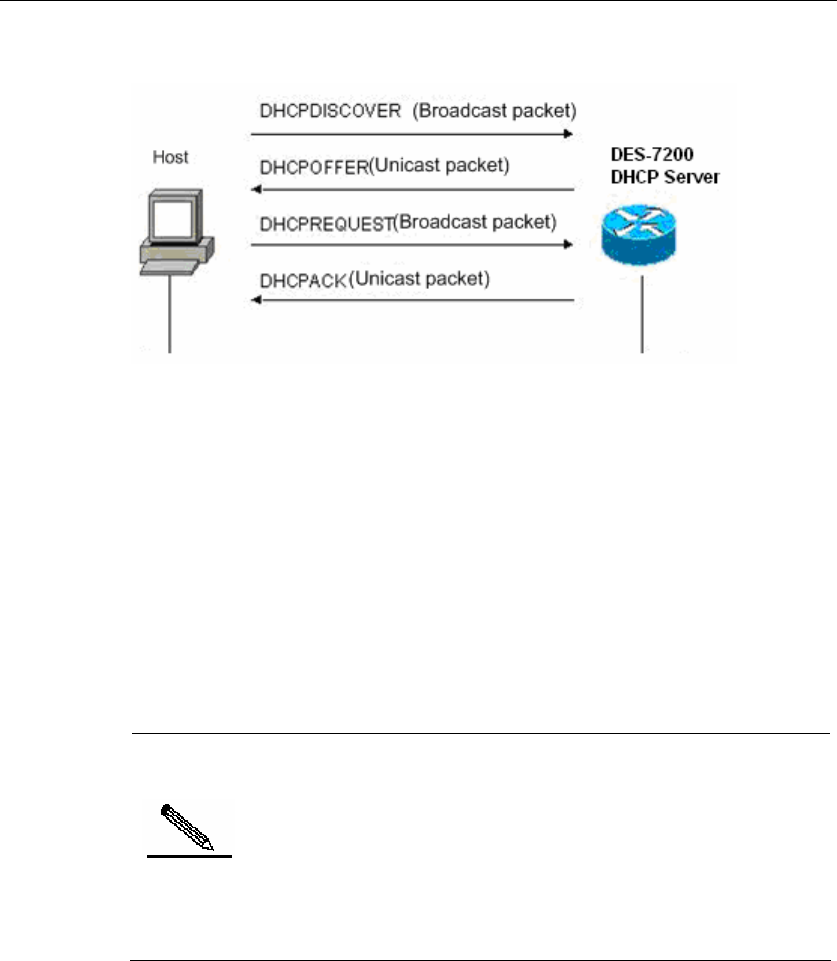
DES-7200 Configuration Guide Chapter 4 DHCP Configuration
4-2
Process of requesting an IP address:
1. The host broadcasts a DHCPDISCOVER packet in the network to locate the
DHCP server;
2. The DHCP server sends a DHCPOFFER packet in unicast form to the host,
including IP address, MAC address, domain name and address lease period;
3. The host sends a DHCPREQUEST packet in broadcast form to formally
request the server to assign the provided IP address;
4. The DHCP server sends a DHCPACK packet in unicast form to the host to
confirm the request.
Note
The DHCP client may receive the DHCPOFFER packets from
multiple DHCP servers, and accept any DHCPOFFER packet.
However, the DHCP client usually accepts the first received
DHCPOFFER packet only. The address specified in the
DHCPOFFER packet from the DHCP server is not necessarily
the finally assigned address. Generally, the DHCP server
reserves this address until the client sends a formal request.
The goal of broadcasting the DHCPREQUEST packet is to let all the DHCP
servers that send the DHCPOFFER packet receive this packet and then release
the IP address specified in the DHCPOFFER packet.
If the DHCPOFFER packet sent to the DHCP client contains invalid parameters,
the DHCP client sends the DHCPDECLINE packet to refuse the assigned
configuration.
During negotiation, if the DHCP client does not respond to the DHCPOFFER
packet in time, the DHCP server will send the DHCPNAK packet to the DHCP
client, initiating the address request process again.
The advantages of using the DHCP server of DES-7200 for network
construction are:


















